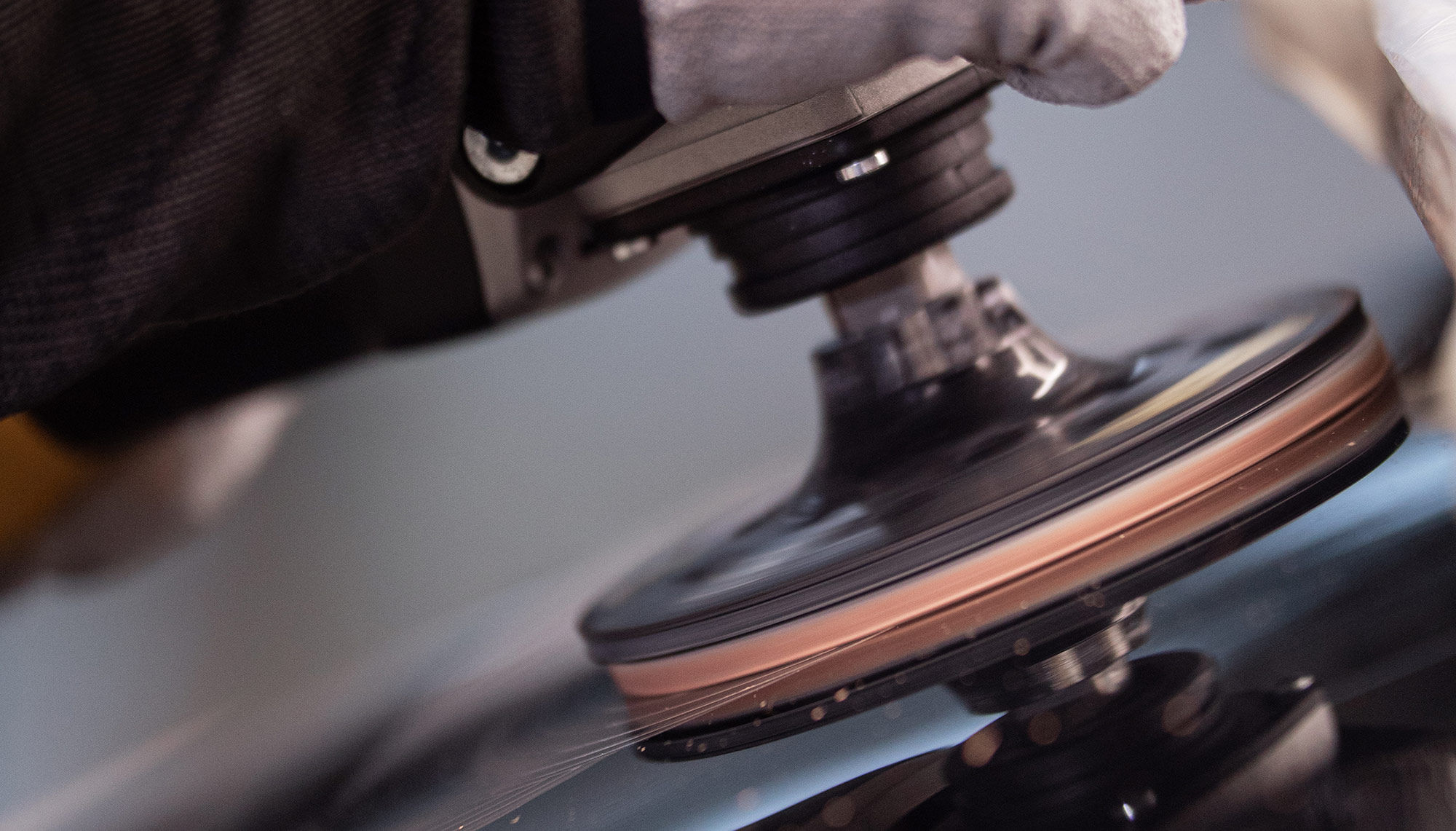2+1 years
Register Your Tool
All Mirka power tools have a standard two-year warranty. Get an additional 1 year of warranty free of charge by registering your tool within 30 days of purchase.
The smart solution for glass reconditioning
Before you start
Start sanding with a fine grit, eg. 320 grit, or just polish out the scratch. If the fine grit does not sand enough, use the next coarser grit. This way you can avoid additional steps when removing the scratches. The following process starts with 180 grit, which is recommended for deep scratches.
Recommended products
How to choose between Abranet SIC NS® or Abralon®
Both Abranet Sic NS and Abralon use Silicon Carbide grains, which is the optimal grain when sanding glass. They contain no stearate coating, which is unnecessary for sanding glass.
If you have deep scratches or you are sanding a large area, start with Abranet. For superficial scratches, we recommend starting with Abralon. Abranet gives a closer feeling to sanding surface and a more aggressive sanding result.
Abralon® is a sanding material developed for tackling both smooth and profiled surfaces. Its patented, flexible construction allows it to create a smooth sanding pattern on angled surfaces and edges while minimising the risk of pressure marks.
Abranet® SIC NS is a multifunctional net abrasive without stearate, developed mainly for glass sanding. A combination of high performance and a longer lifespan than traditional abrasives give a cost-effective solution.
Solvent-based polishes may be effective in the short run, but they are more damaging and harmful.
Portfolio Manager, Mirka
A better choice for you and the environment
All polishes that Mirka produces are water-based and produced in Finland. There are many benefits of choosing a water-based polishing compound.
Do you want to know more?
Please get in touch and our expert support team will answer your questions.
Save time and money – You can cut costs and reduce working hours
Sand and polish safely without strain – Our tools and abrasives are ergonomic, efficient, and easy to use
Improve the quality of work – The finish is excellent, with less effort
Toyota bodyshop, Finland
The world is different when you see it through the eyes of a true craftsman. Timo Korpiniemi works at Toyota's body shop, fixing dents and scratches, trying to find that elusive perfect finish.
"Customers wonder how we're able to make a piece of junk look brand new."
